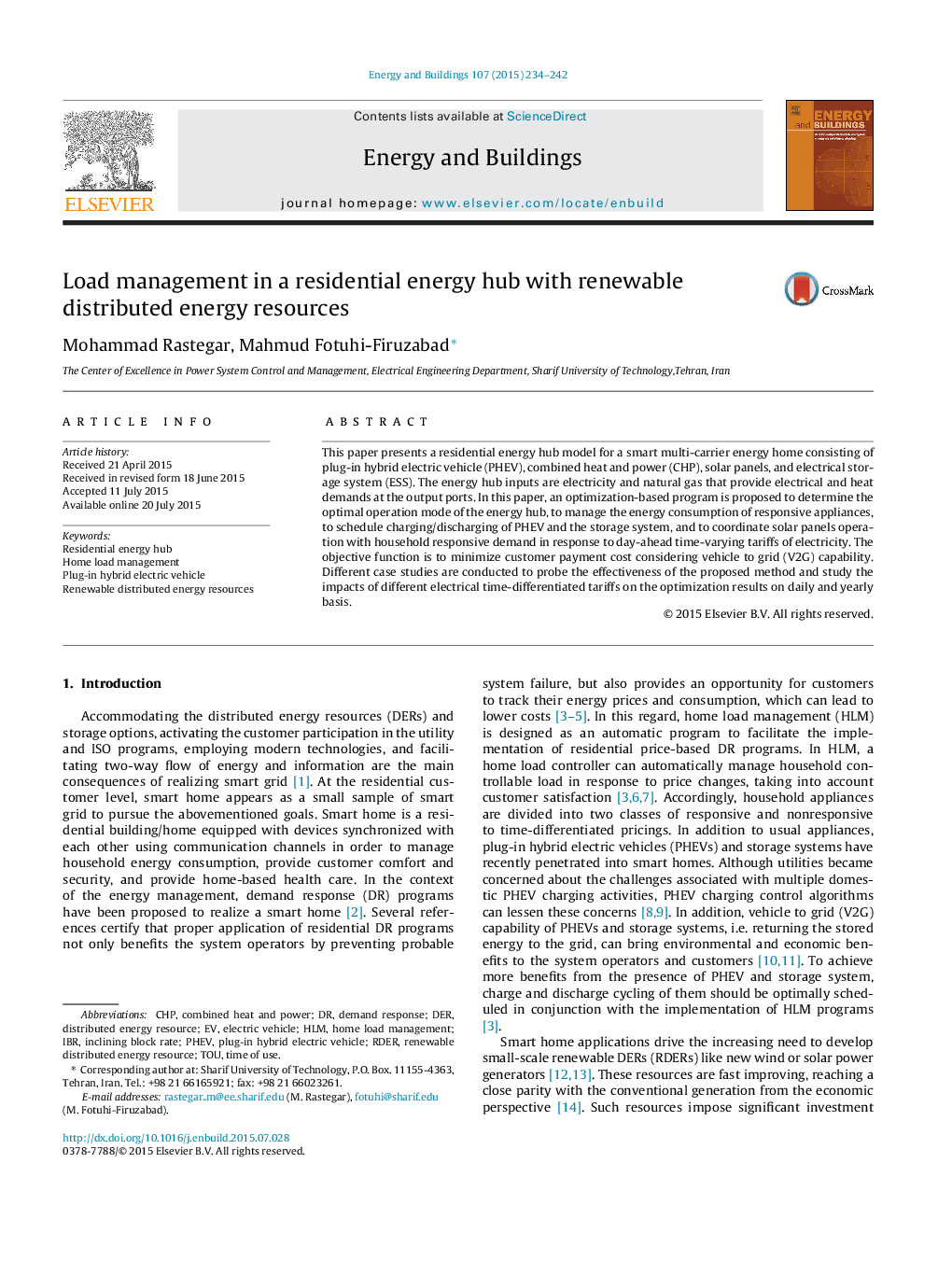| Article ID | Journal | Published Year | Pages | File Type |
|---|---|---|---|---|
| 262344 | Energy and Buildings | 2015 | 9 Pages |
•Home load management (HLM) is implemented in a multi-carrier energy environment.•Impacts of CHP, solar panels, V2G, and ESS presence are investigated on the HLM.•Results of proposed HLM are reported for winter and summer days.•Impacts of prevalent residential electricity pricings on HLM are investigated.
This paper presents a residential energy hub model for a smart multi-carrier energy home consisting of plug-in hybrid electric vehicle (PHEV), combined heat and power (CHP), solar panels, and electrical storage system (ESS). The energy hub inputs are electricity and natural gas that provide electrical and heat demands at the output ports. In this paper, an optimization-based program is proposed to determine the optimal operation mode of the energy hub, to manage the energy consumption of responsive appliances, to schedule charging/discharging of PHEV and the storage system, and to coordinate solar panels operation with household responsive demand in response to day-ahead time-varying tariffs of electricity. The objective function is to minimize customer payment cost considering vehicle to grid (V2G) capability. Different case studies are conducted to probe the effectiveness of the proposed method and study the impacts of different electrical time-differentiated tariffs on the optimization results on daily and yearly basis.
